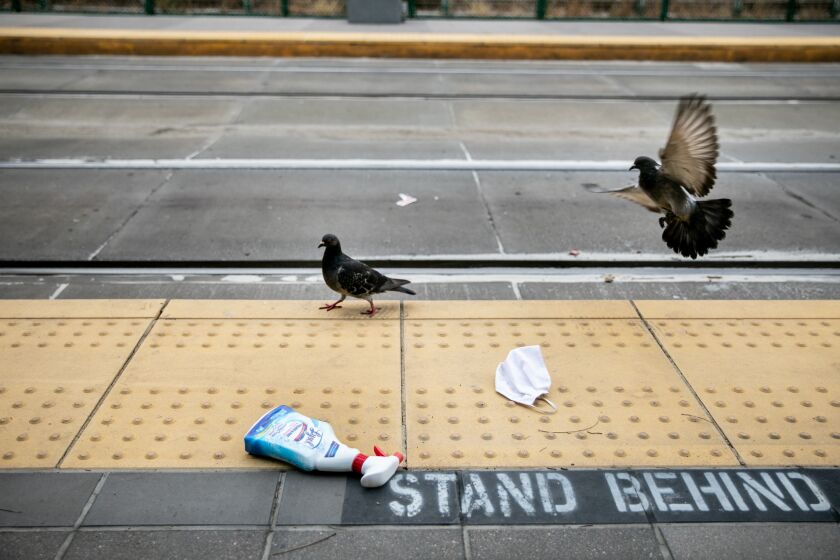
OPINION: WE'VE MADE HUGE ADVANCES AGAINST COVID. WHY IS IT STILL KILLING SO MANY PEOPLE?
Many immunocompromised and older people are still terrified of COVID. As a transplant infectious disease doctor on the front lines, I understand why.
In the first five months of 2023, COVID caused more than 37,000 deaths in the U.S., a typical toll from the flu in an entire year. Scientists estimate an annual U.S. COVID death rate of at least 100,000, dwarfing other infectious diseases. And the virus continues to evolve: The highly transmissible XBB.1.16 subvariant (Arcturus), currently making up about 15% of cases nationally, is expected to be the dominant strain by summer. Wastewater surveillance is also showing an uptick in the virus in New York City and elsewhere.
Meanwhile, the federal public health emergency ended last month, and across the country the pandemic has moved to back of mind. It’s not surprising that the most vulnerable feel left behind.
Yet at the same time, health professionals are optimistic about today’s anti-COVID arsenal. Biomedical advances have revolutionized our ability to thwart serious disease and death from the virus, even as it mutates. The bivalent vaccines are about 70% effective at preventing hospitalization and death, and if taken in the first five days of infection, Paxlovid or remdesivir are as much as 90% effective. Patients hospitalized in 2023 encounter a fine-tuned litany of antivirals and anti-inflammatory agents. We are at the lowest point in the pandemic for hospitalizations and deaths, and the average person being infected with COVID now has mild symptoms. Many of the protections we’ve developed can help most at-risk people.
So, why are so many people still dying? And how do we reconcile those numbers with the vast improvements in our COVID tools?
This disparity points to a continued public health failure to take full advantage of these tools and to communicate the evolving risks in this phase of the pandemic. COVID never treated all groups equally, and some older people and immunocompromised individuals still face the highest risk of serious illness. But the calculus is nuanced, especially in light of treatment advances that should be used to protect more people.
To start, the immunosuppressed population is diverse. Most of these individuals, including patients on immunosuppressive medications such as corticosteroids and biologics, respond well to the COVID vaccines, which do offer them a strong layer of protection. Even for severely immunocompromised people — namely a fraction of those with malignancies or autoimmune disorders who take a drug that depletes their antibody response, as well as patients who recently got a transplant — vaccination is safe and effective when timed carefully around their treatment plans. If these higher-risk patients are hospitalized with COVID, early use of antivirals such as remdesivir with plasma and anti-inflammation therapy can help them recover.
Overall, the elderly population remains most vulnerable: Currently more than 90% of COVID deaths are of people 65 years and older. However, given that immunity (as measured by antibody response) wanes fastest in that age group, it is likely the unboosted who remain at highest risk, not the entire population. And research suggests that giving Paxlovid to a greater number of eligible patients would reduce deaths. All of this makes clear that COVID does not have to be so dire for older individuals if we ensure that more are up to date on boosters and have access to the full range of therapies.
That points to two steps our political and public health leaders should take: First, more vigorously promote the recent bivalent boosters, especially to populations that need it the most. Only 43% of those 65 and older, and 17% of Americans total, have received these boosters to date. Second, reduce barriers to Paxlovid and other early therapy use. This includes reeducating clinicians about the benefits and dispelling exaggerated fears about Paxlovid rebound (symptoms re-emerge after use of the medication for just a small percentage of patients, and illness can return even for people who didn’t take the drug). Providers should help patients, especially those at high risk, develop a Paxlovid plan so they know how to get it, what drug interactions to watch out for and any alternatives to Paxlovid they can take.
In addition, the federal government should continue to provide funding so that all communities including the uninsured have access to testing, vaccines and early therapy. Initiatives to keep improving our COVID arsenal, such as the $5-billion Project NextGen to promote development of vaccines and therapeutics, must be expanded.
Finally, public health leaders need to improve communications — both to combat misinformation and to make the public more aware of available resources. For example, the Centers for Disease Control and Prevention still provides a map of COVID risk for counties nationwide. During high levels of hospitalizations in their community, everyone should wear a well-fitting high-quality mask. Vulnerable populations should mask during medium levels and consider wearing masks in any crowded indoor areas or on public transit.
We all need to be sensitive to the needs and fears of those among us who are at risk of serious illness from COVID. We still have work to do — but there’s less reason than ever that COVID should exist in parallel universes. Far more people could be getting protection and treatment.
Peter Chin-Hong is a professor of medicine and an infectious disease doctor specializing in immunocompromised patients at UC San Francisco. @PCH_SF
This story originally appeared in Los Angeles Times.
2023-06-05T10:12:26Z dg43tfdfdgfd